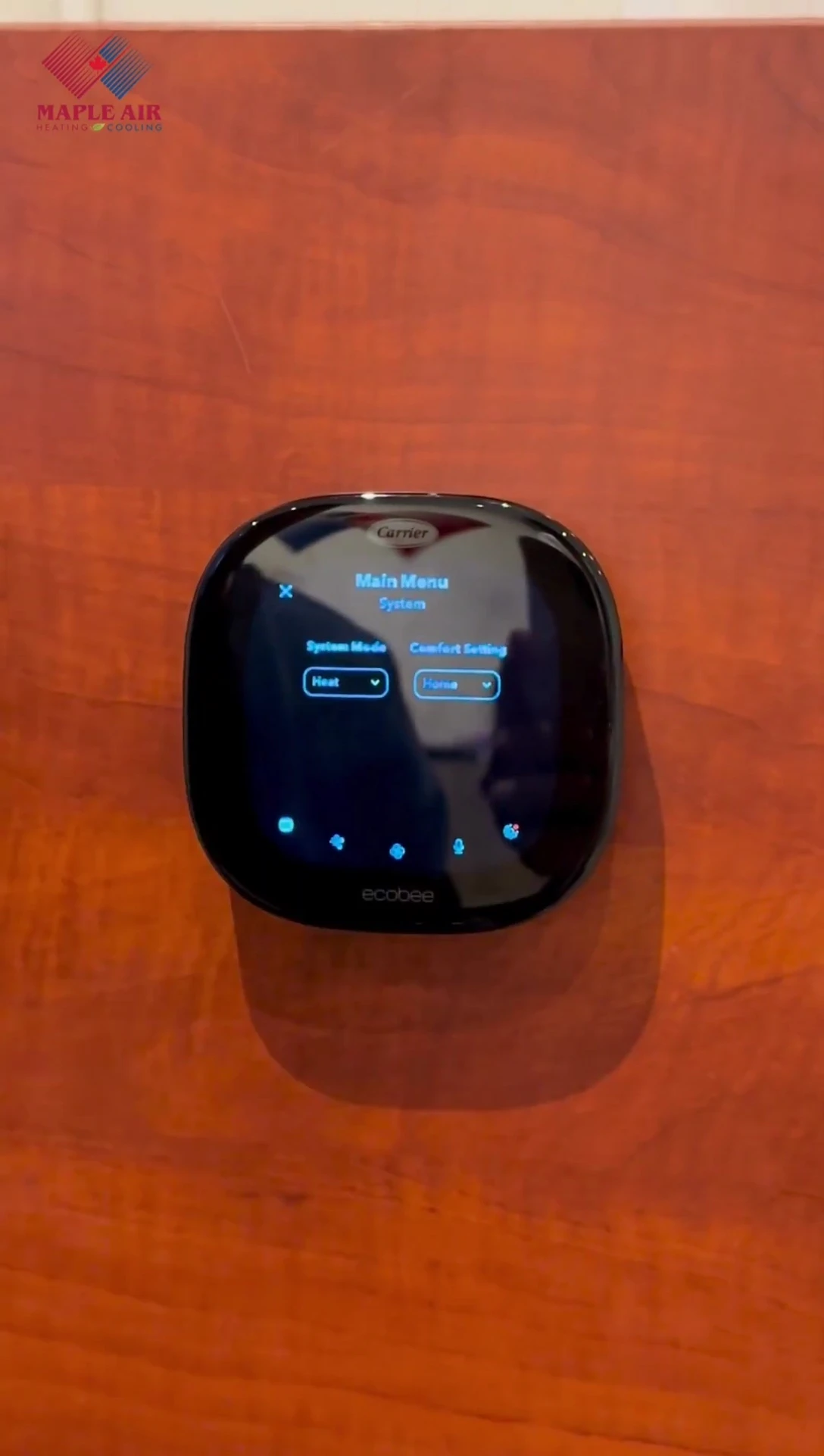Optimizing your Ecobee thermostat for heat pump efficiency can significantly reduce energy costs and extend the lifespan of your heating and cooling system. This comprehensive guide provides a step-by-step walkthrough of the key settings within your Ecobee’s advanced options menu, allowing you to fine-tune your heat pump's interaction with its backup heating system. We'll explore crucial settings like auxiliary heat engagement temperature, compressor minimum operating temperature, and the crucial compressor-to-auxiliary runtime.Understanding these settings and how they affect your system's performance is key to maximizing energy savings. We'll explain the importance of each setting, offering recommendations and guidance on how to make informed adjustments tailored to your specific climate and home insulation. While professional assistance is always recommended for complex scenarios, this guide empowers you to take control and optimize your Ecobee thermostat for peak performance and long-term cost savings.
Pros And Cons
- Easy to adjust settings.
- Allows for utilization of furnace or heat pump based on user preference and needs.
Read more: Nuwave PIC Titanium Induction Cooktop Review: A Mixed Bag of Features
Accessing Advanced Settings
To begin optimizing your Ecobee thermostat for heat pump performance, navigate to the main settings menu. You'll find this easily accessible through the intuitive interface of your thermostat. From there, look for the 'Installation Settings' or 'Advanced Options' section; this is where the heat pump threshold adjustments reside. Accessing these options is usually done through a simple scroll and select function.

Once in the advanced settings, you'll have a range of options to configure your heat pump’s interaction with your backup heating system (furnace). Remember, these settings are not something you need to tweak every day. Adjustments are typically made only when troubleshooting heating or cooling issues, or when you want to fine-tune how your system utilizes both the heat pump and auxiliary heat.

Key Threshold Settings and Their Impact
The 'Auto Heat/Cool' setting should always be disabled to prevent conflicts between your heat pump and auxiliary heating. The 'Heat/Cool Minimum Delta' is typically pre-set to an optimal value (2.8 in the video) and shouldn't need adjustment unless advised by a professional. The staging settings determine how your heat pump cycles on and off, and generally, it’s best to set this to 'Manual' for better control.

The 'Auxiliary Heat Maximum Outdoor Temperature' dictates when your backup furnace engages. A setting of 10°C (as in the video) means the furnace will kick in if the outside temperature falls below 10°C. Adjust this based on your climate and desired heat pump usage. Lower values prioritize heat pump use, while higher values prioritize the furnace in colder conditions.

Compressor and Run Time Adjustments
The 'Compressor Minimum Cycle Off Time' should remain at 600 seconds (10 minutes) to prevent rapid cycling and strain on your heat pump. The 'Compressor Minimum Outdoor Temperature' dictates the lowest ambient temperature at which your heat pump will operate. This is a crucial setting; setting it too low can lead to unnecessary furnace use, while setting it too high might leave your home cold on milder days. Adjusting this based on your climate and home's insulation is key.

The 'Compressor to Auxiliary Temperature Delta' setting is highly significant, and should be set to 'Auto'. This allows the thermostat to dynamically determine when to switch from the heat pump to the auxiliary heat based on system efficiency. The 'Compressor to Auxiliary Runtime' setting is best left at a minimum of 20-30 minutes. This ensures the heat pump runs for a sufficient time before switching to the furnace, improving energy efficiency.

Conclusion: Optimizing Your Ecobee for Heat Pump Efficiency
By carefully adjusting the Ecobee thermostat's heat pump threshold settings, you can significantly improve the efficiency of your heating and cooling system, reducing energy costs and maximizing the lifespan of your heat pump. The key settings to focus on are the auxiliary heat maximum outdoor temperature, compressor minimum outdoor temperature, and the compressor to auxiliary runtime. Remember that careful consideration of your local climate and the insulation level of your home is crucial in achieving optimal performance. Don't hesitate to consult a professional HVAC technician for personalized guidance.
Proper configuration minimizes unnecessary furnace use, thus lengthening the lifespan of both your heat pump and furnace. The Ecobee's intuitive interface makes these adjustments manageable, but the impact on energy savings and system longevity can be substantial. While this guide provides a strong foundation, professional assistance might enhance your system's overall performance, especially in complex scenarios.
